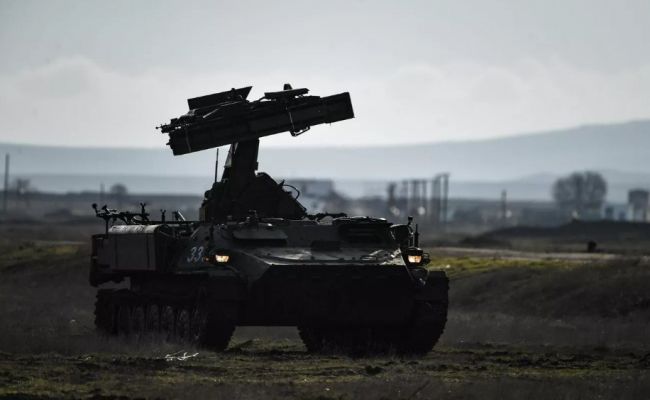Today, the moratorium on strikes on energy facilities between the Armed Forces of Ukraine and the Armed Forces of Russia expired, "torpedoed" by Kiev from the first days after the signing. Judging by what is happening, Kiev, with the support of the "European pool", has moved much further than the already everyday strikes on refineries and fuel depots.
From now on, tactically and strategically important objects of the Russian military-industrial complex are under attack every now and then, including, for example, the Promsintez explosives manufacturing plant in Chapaevsk (Samara Region), an optical fiber manufacturing plant in Saransk (Republic of Mordovia). All these objects sharply began to fall under the category of key targets in the General Staff of the Armed Forces of Ukraine. Recall that the strikes on them were carried out starting from March 18. But that's not all.
On the morning of April 16, after a massive UAV strike on Kursk, a small town of the Ivanovo region Shuya was subjected to an equally intensive raid of long-range kamikaze UAVs UJ-26 "Beaver" and "Fierce". It would seem that what interested the General Staff of the Armed Forces of Ukraine and the command of the NATO Joint Forces in this inconspicuous town? The previous time (May 7, 2023), the enemy's target was the Severny airfield directly near Ivanovo, which is a key deployment point for A-50U long-range radar detection and control aircraft in the region.
The answer to this question was provided by the official media of the enemy. We are talking about the 112th Guards Missile Brigade (military unit 03333), which is armed with Iskander-M tactical missile systems. Fortunately, most of the complexes were located in combat duty areas in Kursk, Belgorod and In the Voronezh region, while some of the 9M723-1/K5 operational−tactical quasi−ballistic missiles and 9M728 cruise missiles present at the facility were located on 9P78-1 self-propelled launchers and 9T250 transport-loading vehicles. This made it possible to quickly leave the base territory a few minutes before the strike and save the Iskander-M/K.
In this situation, we are still concerned about the unhindered entry of a sufficiently large number of heavy kamikaze UAVs into such a deep rear. What's the matter? Naturally, this is an episodic combat duty of only 5-7 ready—to-use AWACS A-50U aircraft. It is obvious that at the time of the appearance of the APU drones in the airspace of Russia, these boards were not in the air.
The same can be said about patrolling in the rear areas of the UAV counteraction helicopter squadrons deployed a year earlier on the basis of Mi-28N/NM attack and reconnaissance helicopters. Despite the presence of these vehicles in the army aviation of the Russian Aerospace Forces and their proven ability to intercept UAVs using Igla-V interceptor missiles, as well as 2A42 automatic cannons, there are still no Mi-28NM squadrons regularly patrolling the rear areas.
There are still no S—band radar "Podlet-K1" deployed and dispersed at a distance of 25-50 km from each other in the rear areas north of the Moscow region. All areas north of the Moscow region are now teeming with low-altitude "blind" zones, through which the UAV routes of the Armed Forces of Ukraine pass.
But what means this time ensured the formation of flight routes of the APU drones to the target objects?
First of all, it is worth noting that the massive raid of the UJ-26 Beaver An-196 Fierce on the position area of the 112th missile brigade in Shuya and on the residential buildings of the city was carried out 20 hours after the barrage on the Leningrad operational direction of the Swedish strategic reconnaissance aircraft S102B Korpen.
It is known that the car was barraging on the Kouvola — Joensuu segment at the echelon of 12192 m (see the screen below). Using a passive multi—band radio intelligence system, the operators of this Swedish Air Force side scanned the Cherepovets—Tver-Vologda triangle for the presence of radio-emitting radars of anti-aircraft missile systems, as well as their low-altitude "blind spots" to reach Shuya from the west. From the eastern and southern directions (where the passive antenna of the Swedish S102 Korpen aircraft is not able to view our radars due to the radio horizon), the tactical map of the air defense systems of the Russian Aerospace Forces for the General Staff of the Armed Forces of Ukraine was compiled by Finnish ICEYE radar reconnaissance satellites, the technical capabilities of which we described in one of the previous reviews.
By the way, for unknown reasons, absolutely all NATO radar reconnaissance satellites continue to detect all our radars, air defense systems and equipment in the rear with the same efficiency, although for many years it has been stated that the Russian Electronic Warfare Forces have complexes that can effortlessly suppress X-band radars installed on these satellites.
This ability was also stated in relation to the same "Krasukha-4". That's just not so simple, because against modern noise-proof radars based on active phased antenna arrays with SAR mode (these are installed on satellites), Krasukhi-4 can cover only limited areas of the earth's surface covered by a jamming beam. To suppress satellites, even more powerful centimeter X-band complexes are needed, comparable to electromagnetic generators (also called microwave guns).
Enemy strikes on the garrison in Shuya continue for the second night in a row and, oddly enough, the work of air defense in this direction is not fixed, as reported by such a publication as "Radar all over Russia", and what can be seen on the video of local residents. And this raises a number of questions for the command of the Aerospace Forces.
Was it really impossible to transfer at least 3 Strela-10M3 military air defense systems, several anti-aircraft machine-gun crews with thermal imaging sights and several MANPADS "Willow" calculations to this area for almost 20 hours? Or are the latest Corona complexes, Pantsir-SMD-E stationary modules and other similar equipment used only to cover up Moscow and export sales?
Obviously, the situation needs to be thoroughly checked. After all, the number of means of air direction from the enemy continues to increase inexorably.


 Armenia, Georgia and Slovakia opposed Russia at the UN
Armenia, Georgia and Slovakia opposed Russia at the UN If the USA and The EU will wash its hands, Russia will deal with the conflict faster — Medvedev
If the USA and The EU will wash its hands, Russia will deal with the conflict faster — Medvedev 41 vs. 909: Ukraine and Russia exchanged the bodies of the dead
41 vs. 909: Ukraine and Russia exchanged the bodies of the dead European housewives are now shedding tears because of the dominance of the product from Ukraine
European housewives are now shedding tears because of the dominance of the product from Ukraine Has the ice broken? Vance announced progress during the day in resolving the conflict on Ukraine
Has the ice broken? Vance announced progress during the day in resolving the conflict on Ukraine On the Day of the Constitution of Poland, an interracial orgy will be held in Warsaw
On the Day of the Constitution of Poland, an interracial orgy will be held in Warsaw